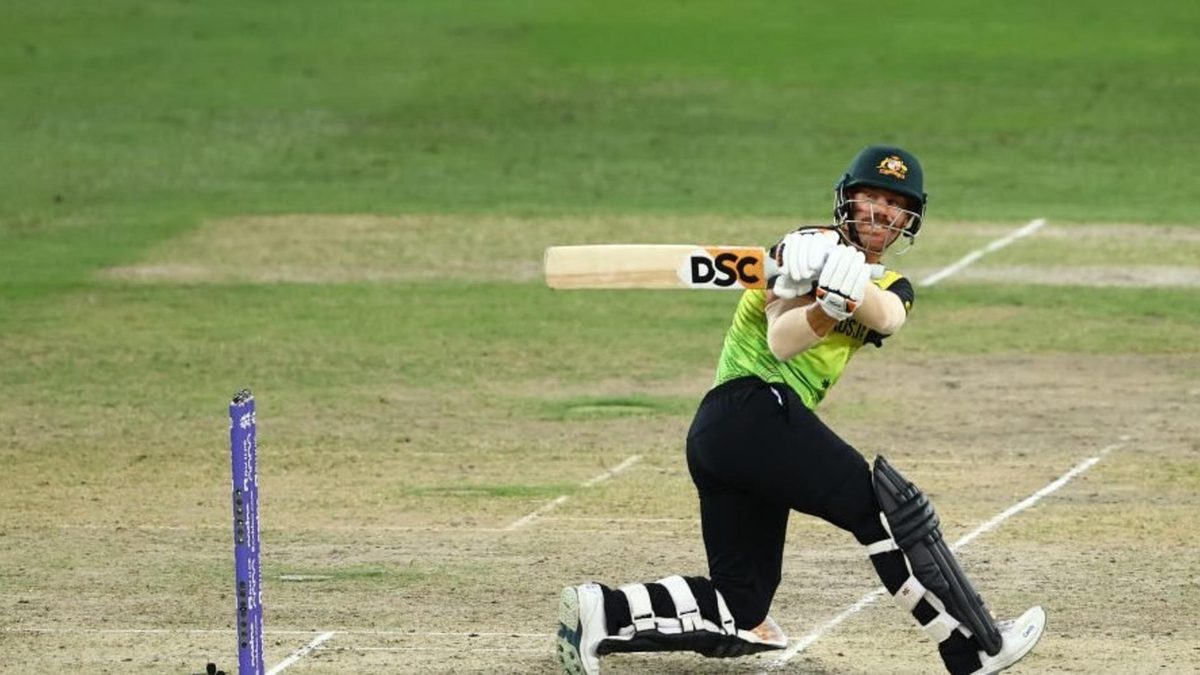
Australia were far from being the favourites before the beginning of the T20 World Cup, but have managed to turn around their fortunes when not many gave them a chance, writes Sarah Waris.
Sign up to bet365 to be entered into a draw for the chance to win a Wisden Hoodie, terms and conditions apply, more information here. 18+ begambleaware.org
Momentum is often given undue importance when sides head into a multi-team event. Pre-tournament analysis explores the consistency of players, the overall performances of sides in different conditions and the tendency to stick together amid tough situations. Predictions are then made based on the parameters above, but the beauty of such competitions lies in their unpredictability.
The ability to fight the odds and rise above expectations remains the hallmark of a true champion side, something which both New Zealand and Australia have displayed in the ongoing T20 World Cup. While the Black Caps, with their consistent returns despite limited matches and a not-too-pompous purse, have etched their place as a modern-day great side, Australia have shown they can never be counted out. Not in the fray for a favourites tag based on their recent run and their overall history in the event — they entered the final of the T20 World Cup just once, back in 2010 — the Aaron Finch-led side have buried old demons to stand a one in two chance of leaving UAE with a trophy.
Winning is a good habit, but Australia were far from it
The Aussies have had a roller-coaster journey in the last two-and-a-half years, climbing the summit of the rankings in May 2020. It was a reward for their run in the last few months, a duration in which they completed a hat trick of series wins in 2019 before winning 2-1 in South Africa in 2020. However, the resumption of the game following the Covid-19 pandemic saw a drastic downfall. Rustiness, injuries, poor form followed by the mental effects of the bio-bubble saw them lose to England, India, New Zealand, West Indies, and Bangladesh one after the other.
15 losses in 21 T20Is in a year before the start of the T20 World Cup saw them slide down to number six in the rankings. With the bench strength unable to take on the role of the star players, the fringe was terribly exposed, Australia struggled and struggled badly. Slotted into the Group of Death, the off-field controversies further cast doubt over a successful outing before the event began.
Six matches and five wins later, they are one step clear of history.
Australia have managed to silence questions over their combination, have found out-of-form superstars raise their game when it mattered the most, and have seen their biggest worry, the middle-order, perform in crucial moments.
David Warner, who struck at 128 in T20Is from 2020 till the start of the event, was deemed to be nearing the end of his T20I career but three 45+ scores later, stands at the forefront of his side’s charge. A below-par IPL this year, where he made 193 runs at a strike rate of just over 110 raised question marks over not only him but the overall effectiveness of the opening pair, with Aaron Finch last playing a T20I in July against West Indies. The duo has now made 366 runs for the opening stand in this competition, with two fifty-plus stands to remove a major concern for the side.
Steve Smith along with Mitchell Marsh, an all-rounder who had tasted decent success at three, had to compete with Matthew Wade, yet another top-three batter for a spot in the XI. Josh Inglis, a player who had scored two fifties in The Hundred as an opener, meant Australia went into the competition with a top-heavy unit, with the finishing prowess left to Marcus Stoinis and Glenn Maxwell. This year till the start of the T20 World Cup, the top three from Australia had scored 1,090 runs at an average of 24.77, with batters from positions four to six making 612 runs at an average of 14.92 at a strike rate of just 113.33.
To rectify the trail of losses, it was imperative that the lower middle order reversed the trend in the T20 World Cup, which is what they have proceeded to do. Though none of the middle-order batters have made more than 85 runs from Australia in the competition, Stoinis and Wade have played crucial knocks on different occasions to make up for the indifferent run by Maxwell.
The team has shed their bowling-heavy approach in the edition to accommodate Marsh in place of Ashton Agar, and the risk has been repaid as the specialist bowlers have more than done their job. Australia have picked up 11 wickets in the powerplay overs, the joint-most by any side in the T20 World Cup, with Adam Zampa leading the bowling charge in the middle overs. The spinner has 12 scalps in the edition thus far, at an economy rate of 5.69, the most wickets taken by a bowler who did not participate in the qualifying round of the tournament.
Australia have won all their games chasing so far, losing their only match when they batted first against England, but the team has shown that being called ‘favourites’ accounts for little before a competition. Beyond just learning from their mistakes, incorporating tactical changes, playing together as a unit and giving players well-defined roles (along with, of course, the clinching of clutch moments), the side has proven that it is the will to never give up that matters over any pre-tournament tags.








